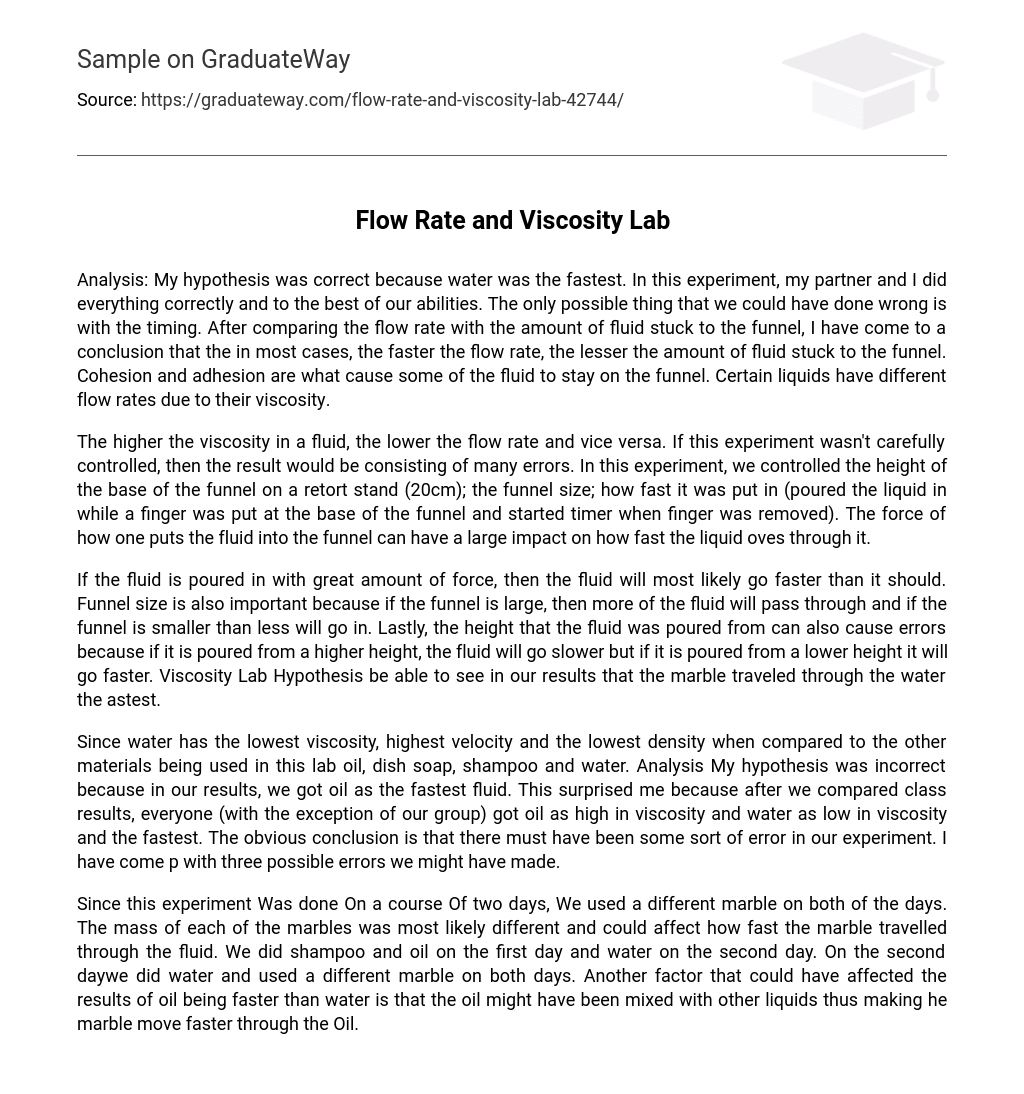Analysis: My hypothesis was correct because water was the fastest. In this experiment, my partner and I did everything correctly and to the best of our abilities. The only possible thing that we could have done wrong is with the timing. After comparing the flow rate with the amount of fluid stuck to the funnel, I have come to a conclusion that the in most cases, the faster the flow rate, the lesser the amount of fluid stuck to the funnel. Cohesion and adhesion are what cause some of the fluid to stay on the funnel. Certain liquids have different flow rates due to their viscosity.
The higher the viscosity in a fluid, the lower the flow rate and vice versa. If this experiment wasn’t carefully controlled, then the result would be consisting of many errors. In this experiment, we controlled the height of the base of the funnel on a retort stand (20cm); the funnel size; how fast it was put in (poured the liquid in while a finger was put at the base of the funnel and started timer when finger was removed). The force of how one puts the fluid into the funnel can have a large impact on how fast the liquid oves through it.
If the fluid is poured in with great amount of force, then the fluid will most likely go faster than it should. Funnel size is also important because if the funnel is large, then more of the fluid will pass through and if the funnel is smaller than less will go in. Lastly, the height that the fluid was poured from can also cause errors because if it is poured from a higher height, the fluid will go slower but if it is poured from a lower height it will go faster. Viscosity Lab Hypothesis be able to see in our results that the marble traveled through the water the astest.
Since water has the lowest viscosity, highest velocity and the lowest density when compared to the other materials being used in this lab oil, dish soap, shampoo and water. Analysis My hypothesis was incorrect because in our results, we got oil as the fastest fluid. This surprised me because after we compared class results, everyone (with the exception of our group) got oil as high in viscosity and water as low in viscosity and the fastest. The obvious conclusion is that there must have been some sort of error in our experiment. I have come p with three possible errors we might have made.
Since this experiment Was done On a course Of two days, We used a different marble on both of the days. The mass of each of the marbles was most likely different and could affect how fast the marble travelled through the fluid. We did shampoo and oil on the first day and water on the second day. On the second daywe did water and used a different marble on both days. Another factor that could have affected the results of oil being faster than water is that the oil might have been mixed with other liquids thus making he marble move faster through the Oil.
The bottle in which the oil was in could have been turned with a great amount of force which could have changed the result very largely. Another thing that surprised me was that dish soap was faster than shampoo. This surprised me because I thought that dish soap had a higher viscosity and higher density than shampoo. I have come to a conclusion that the best possible explanation for this result was that since we only had 350 mL of one specific shampoo and had to use a different shampoo to fill up the rest of the bottle.





